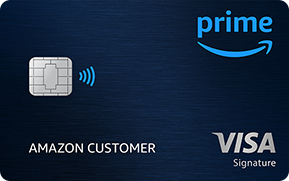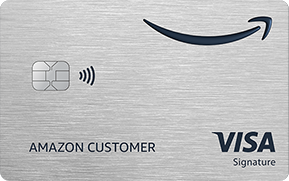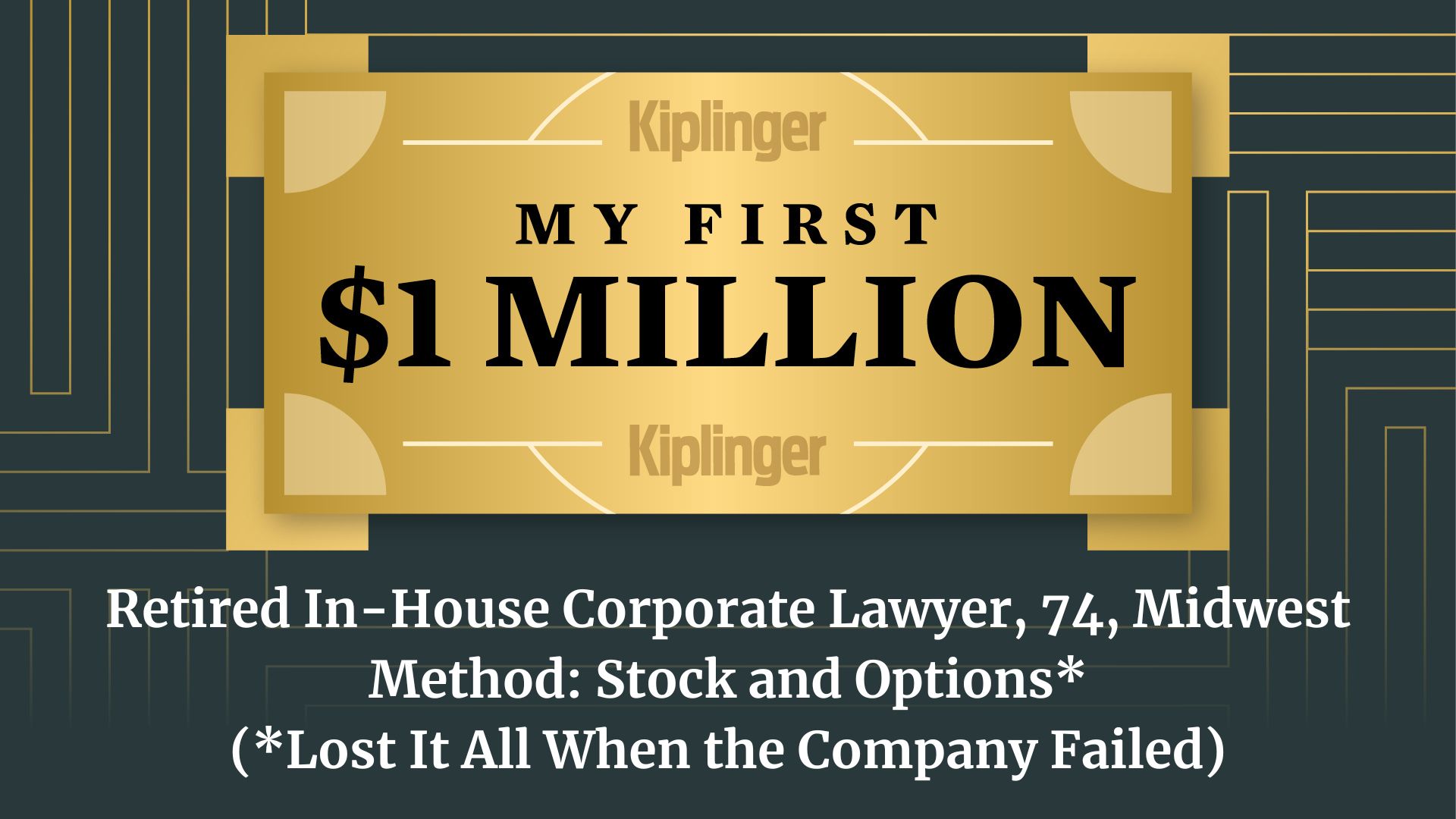Chase’s Co-Branded Amazon Credit Cards Have Both Undergone a Revamp, Including a $100 Bonus
The cards now have new names, looks, benefits and rewards structures.

The content on this page is accurate as of the posting date; however, some of the offers mentioned may have expired.
This specific offer has expired. To see an updated offer, read Amazon Credit Card Delivers $100 Bonus.
Avid Amazon shoppers are likely familiar with, or already own, one of Chase’s two co-branded Amazon credit cards. However, both credit cards have undergone a major revamp, and with one you can score a $100 bonus.
Previously named the Amazon Prime Rewards Visa Signature Card and the Amazon Rewards Visa Signature Card, the cards now have new names, looks, benefits and rewards structures.
From just $107.88 $24.99 for Kiplinger Personal Finance
Become a smarter, better informed investor. Subscribe from just $107.88 $24.99, plus get up to 4 Special Issues

Sign up for Kiplinger’s Free Newsletters
Profit and prosper with the best of expert advice on investing, taxes, retirement, personal finance and more - straight to your e-mail.
Profit and prosper with the best of expert advice - straight to your e-mail.
The new card names, much simpler than before, are the Prime Visa and the Amazon Visa. Both cards have a new feature - daily rewards - which lets cardholders earn and redeem their cashback daily as opposed to monthly.
Also, try our new tool - in partnership with Bankrate - to get personalized credit card offers today.
Prime Visa

The Amazon Prime Rewards Visa Signature Card is now called the Prime Visa comes with a new $100 intro bonus (details below), and as the name suggests, to open the card you’ll need to have an Amazon Prime subscription. An Amazon Prime membership costs $139 per year or $14.99 per month. Besides the required Prime subscription, the card has no annual fee.
Rewards Rate: The new Prime Visa card will offer an upgraded rewards rate, now letting you earn on purchases made through Chase Travel, as well as on local transit and commuting. Here’s a breakdown of the Prime Visa card’s rewards structure.
- 5% back on purchases made through Chase Travel, with an eligible Prime membership (new)
- 2% back on local transit and commuting, including rideshare (new)
- 5% back at Amazon and Whole Foods Market, with an eligible Prime membership
- 2% back at restaurants
- 2% back at gas stations
- 1% back on all other purchases
- 10% or more back on a rotating selection of Amazon products/categories
Welcome offer: Along with an updated rewards structure, the Prime Visa card also offers a generous welcome bonus. Cardholders earn a $100 Amazon gift card upon approval of their account.
APR: 19.49% - 28.24% variable
Amazon Visa

The Amazon Rewards Visa Signature Card is now known simply as the Amazon Visa. The card doesn’t require cardholders to be Amazon Prime members, and has no annual fee.
Rewards Rate: The Amazon Visa also has added perks; it's updated rewards structure lets cardholders earn on other areas of spending. Like the Prime Visa, this card allows users to earn on local transit and commuting along with purchases made through Chase Travel. Here is the full breakdown of the card’s rewards structure.
- 3% back on purchases made through Chase Travel (new)
- 2% back on local transit and commuting, including rideshare (new)
- 3% back at Amazon and Whole Foods Market
- 2% back at restaurants
- 2% back at gas stations
- 1% back on all other purchases
Welcome Offer: The Amazon Visa’s new welcome offer is better than before. Previously, the card awarded a $50 Amazon gift card to users upon approval, but now, this reward is bumped up to $60. Plus, the card now has a limited time offer of 3% back on all purchases, up to $1,500, for three months after account opening.
APR: 18.99%–26.99% variable
Related Content
Profit and prosper with the best of Kiplinger's advice on investing, taxes, retirement, personal finance and much more. Delivered daily. Enter your email in the box and click Sign Me Up.

Erin pairs personal experience with research and is passionate about sharing personal finance advice with others. Previously, she was a freelancer focusing on the credit card side of finance, but has branched out since then to cover other aspects of personal finance. Erin is well-versed in traditional media with reporting, interviewing and research, as well as using graphic design and video and audio storytelling to share with her readers.
-
 Nasdaq Sinks 418 Points as Tech Chills: Stock Market Today
Nasdaq Sinks 418 Points as Tech Chills: Stock Market TodayInvestors, traders and speculators are growing cooler to the AI revolution as winter approaches.
-
 23 Last-Minute Gifts That Still Arrive Before Christmas
23 Last-Minute Gifts That Still Arrive Before ChristmasScrambling to cross those last few names off your list? Here are 23 last-minute gifts that you can still get in time for Christmas.
-
 The Rule of Compounding: Why Time Is an Investor's Best Friend
The Rule of Compounding: Why Time Is an Investor's Best FriendDescribed as both a "miracle" and a "wonder," compound interest is simply a function of time.
-
 23 Last-Minute Gifts That Still Arrive Before Christmas
23 Last-Minute Gifts That Still Arrive Before ChristmasScrambling to cross those last few names off your list? Here are 23 last-minute gifts that you can still get in time for Christmas.
-
 4 Great Tools to DIY Your Own Financial Plan
4 Great Tools to DIY Your Own Financial PlanSmart Savings Several tools picked out by Kiplinger that DIYers can use to make their own financial plan.
-
 The 7-Month Deadline That Determines Your Lifetime Medicare Premiums
The 7-Month Deadline That Determines Your Lifetime Medicare PremiumsUnderstanding Medicare enrollment is crucial, as missing deadlines can lead to permanent late enrollment penalties and gaps in coverage.
-
 Should You Renew Your CD?
Should You Renew Your CD?With rate cuts impacting earnings, we examine if now is a wise time to renew CDs.
-
 Where to Store Your Cash in 2026
Where to Store Your Cash in 2026Set yourself up for success with these strategies.
-
 I'm a Financial Adviser: The Fed's Rate Cuts Could Have Impacts You Might Not Anticipate
I'm a Financial Adviser: The Fed's Rate Cuts Could Have Impacts You Might Not AnticipateUnderstanding how lower interest rates could impact your wallet can help you determine the right financial moves to make.
-
 My Teen Crashed His Car, and Now Our Insurance Has Tripled. What Now?
My Teen Crashed His Car, and Now Our Insurance Has Tripled. What Now?Dealing with the costly aftermath of a teen car accident is stressful. Here are your options for navigating it.
-
 My First $1 Million: Retired In-House Corporate Lawyer, 74, Midwest
My First $1 Million: Retired In-House Corporate Lawyer, 74, MidwestEver wonder how someone who's made a million dollars or more did it? Kiplinger's My First $1 Million series uncovers the answers.